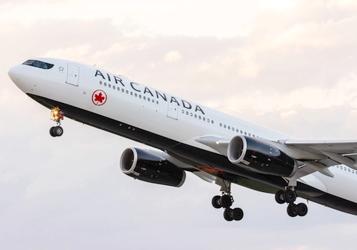
MONTREAL, Quebec, Canada, February 15, 2019 (ENS) – Measures to address aviation’s environmental impact globally were agreed at today’s meeting of the 250 experts on the Committee on Aviation Environmental Protection, CAEP, a part of the International Civil Aviation Organization, ICAO.
The meeting was opened by Dr. Olumuyiwa Benard Aliu of Nigeria, president of the Council of ICAO, who said, “In the 35 years since the CAEP was established, the scope of work and the technical areas which it covers have widened. Yet, despite the monumental challenges set before it, the CAEP remains a tremendous example of international cooperation.”

One outcome of the meeting is a agreement on a new stringency level that would limit emissions of non-volatile Particulate Matter (nvPM), or black carbon, from aircraft engines.
The ICAO standard is expected to drive technologies to address non-volatile particulate matter, which in the long run will minimize their potential environmental and health impacts.
With this new standard, ICAO has completed all main environmental standards for the certification of aircraft and engines, namely for noise, local air quality (NOx, HC, CO, nvPM) and climate change (CO2).
This accomplishment makes the aviation industry the only sector with environmental mandatory certification requirements at the global level for the operation of its equipment. Once applicable, all new aircraft will need to be certified to those ICAO standards before operating.
The meeting also delivered new technology goals for the aviation sector, including:
– improvements of aircraft noise up to 15.5 dB below Chapter 14 limits for single-aisle aircraft by 2027
– improvements in nitrogen oxide, NOx, emissions by 54 percent relative to the latest ICAO NOx Standards and Recommended Practices
– and improvements in fuel efficiency up to 1.3 percent per year for new aircraft entering into production.
On the Carbon Offsetting and Reduction Scheme for International Aviation, CORSIA, agreement was reached on the means to calculate and claim the benefits coming to companies from the use of sustainable aviation fuels within the context of CORSIA, reducing airlines’ offsetting requirements.
The agreement included the default values and the methodologies for calculating actual values needed to calculate the life-cycle CO2 emissions reduction benefits of different feedstocks.
The Committee on Aviation Environmental Protection also agreed on the requirements for Sustainability Certification Schemes, SCS, and a process to evaluate and recommend a list of eligible SCS to certify fuels against the CORSIA sustainability criteria.

This package of agreements provides the clarity needed for the energy sector to embark on the production of sustainable fuels for aviation, and is an important step towards CORSIA implementation.
In addition, CAEP has delivered a recommendation for the rules and procedure for the ICAO Council’s Technical Advisory Body, which will evaluate the eligibility of emissions units for use in CORSIA.
Another agreement was the technical updates of Environmental Technical Manual on CORSIA, which clarifies the recommended actions by governments and airlines for monitoring, reporting and verification of CO2 emissions under CORSIA.
Environmental Trends and Outlook
The committee also agreed on the updated ICAO environmental trends for noise, local air quality – both NOx and nvPM – and global climate, CO2, which will be the basis for the considerations of ICAO environmental policies at the next ICAO Assembly in September.
Publications were developed as part of ICAO’s eco-airport toolkit collection in the areas of renewable energy, waste management, environmental management, and eco-design of airport buildings.
Regarding climate change adaptation, a Synthesis Report was approved for publication, providing information on the climate risk impacts and resilient options for the aviation sector.
Two other important reports were agreed: one on the state of aircraft end-of-life and recycling; and the other on performance-based navigation and community engagement.
The meeting further agreed with the results of the assessment of the positive effects of operational improvements. The assessment showed that with the implementation of these measures, fuel savings between of 167 to 307 kg per flight can be achieved by 2025, reducing CO2 emissions by up to 48 million tonnes.
The meeting agreed on the publication of the white paper “State of the Science 2019: Aviation Noise Impacts Workshop.”
CAEP agreed that an exploratory study should be undertaken into supersonic transport operations and the committee will also assess how to certify other new technologies such as hybrid and electric aircraft as part of its future work.
CAEP is a technical body of the ICAO Council, and all the technical recommendations agreed by CAEP above will be considered by the Council for final approval.
Copyright Environment News Service (ENS) 2019. All rights reserved.
